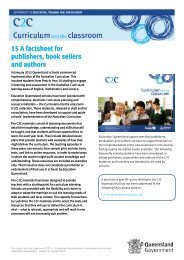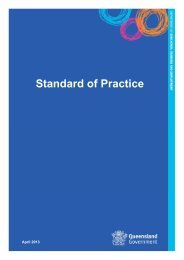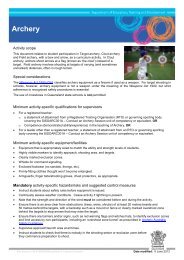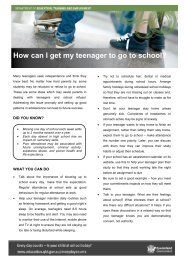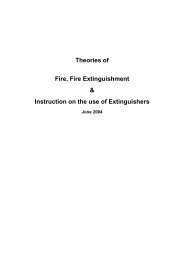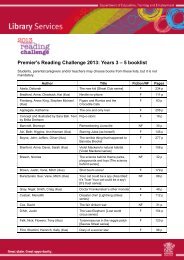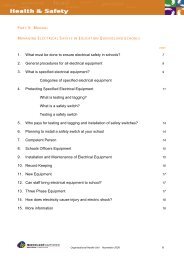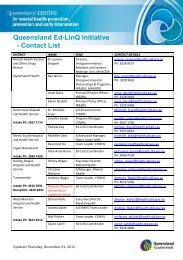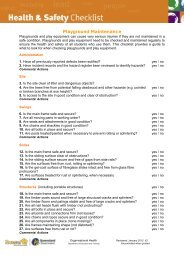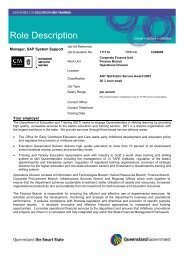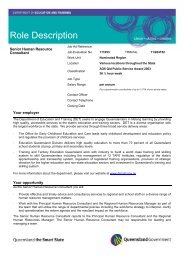Anaphylaxis guidelines for Queensland State Schools - Education ...
Anaphylaxis guidelines for Queensland State Schools - Education ...
Anaphylaxis guidelines for Queensland State Schools - Education ...
You also want an ePaper? Increase the reach of your titles
YUMPU automatically turns print PDFs into web optimized ePapers that Google loves.
Insects<br />
• Specify play areas that are lowest risk and encourage the students to play in this area.<br />
• Decrease the number of plants in school grounds that are known to attract stinging insects or<br />
ticks.<br />
• Increase vigilance in areas where flowering plants are located, e.g. school kitchen gardens.<br />
• Ensure students wear appropriate clothing and shoes when outdoors.<br />
• Be aware of bees in pools, around water and in grassed or garden areas.<br />
• Avoid drinking from open drink containers, particularly those that contain sweet drinks.<br />
• To help prevent tick bites, cover skin and shake clothing once indoors.<br />
• Ensure school grounds people regularly inspect, treat and remove insect nests as required.<br />
• Refer to further in<strong>for</strong>mation on insect and tick allergy at<br />
http://www.allergy.org.au/patients/insect-allergy-bites-and-stings<br />
6.3 Preparing <strong>for</strong> an emergency event<br />
Through implementing risk minimisation strategies, the likelihood of a student experiencing an anaphylactic<br />
event should be reduced. However, exposure to potential allergens cannot be guaranteed, so the<br />
development of a school emergency treatment procedure is essential.<br />
15 <strong>Anaphylaxis</strong> <strong>guidelines</strong> <strong>for</strong> <strong>Queensland</strong> state schools



